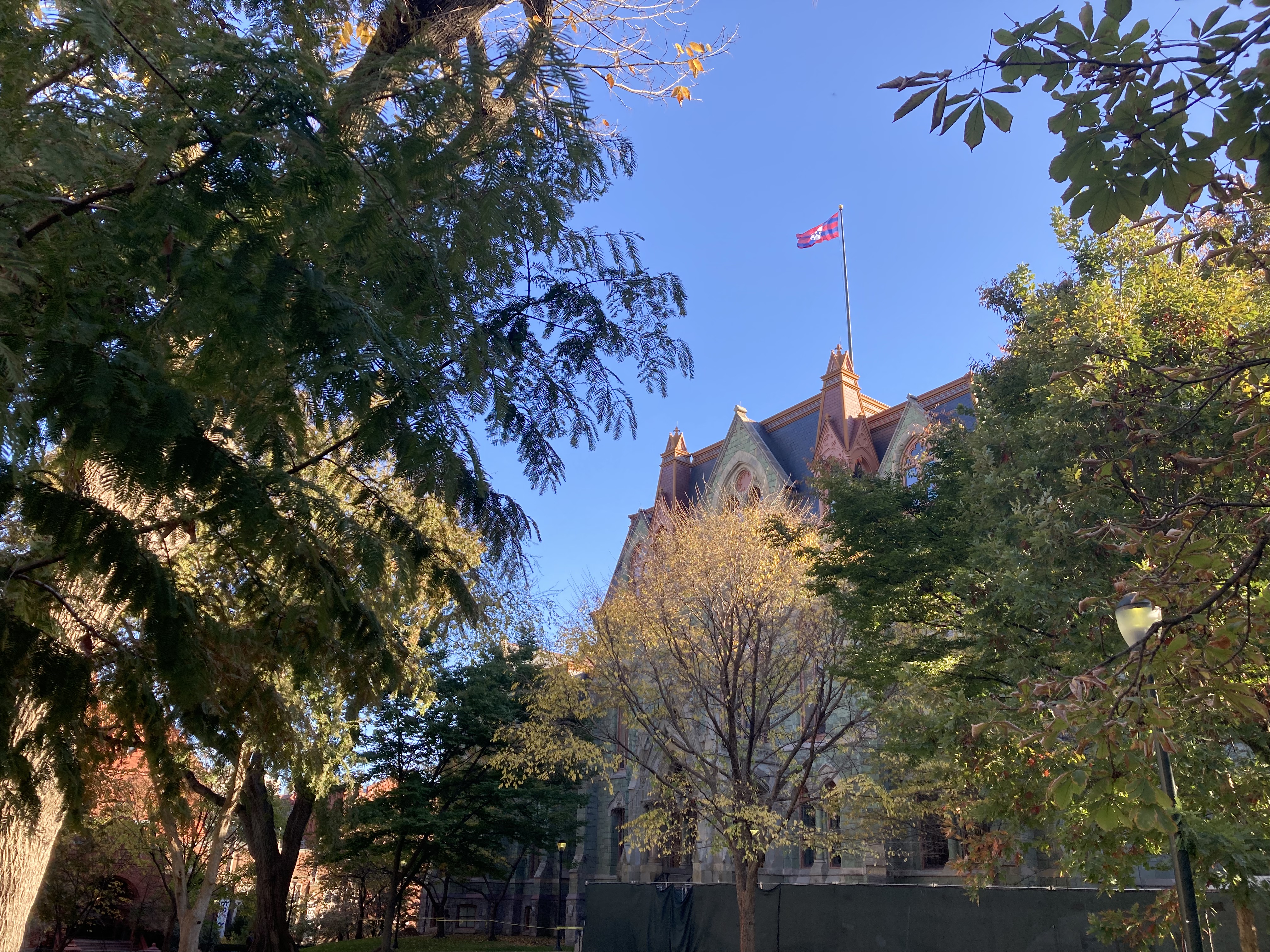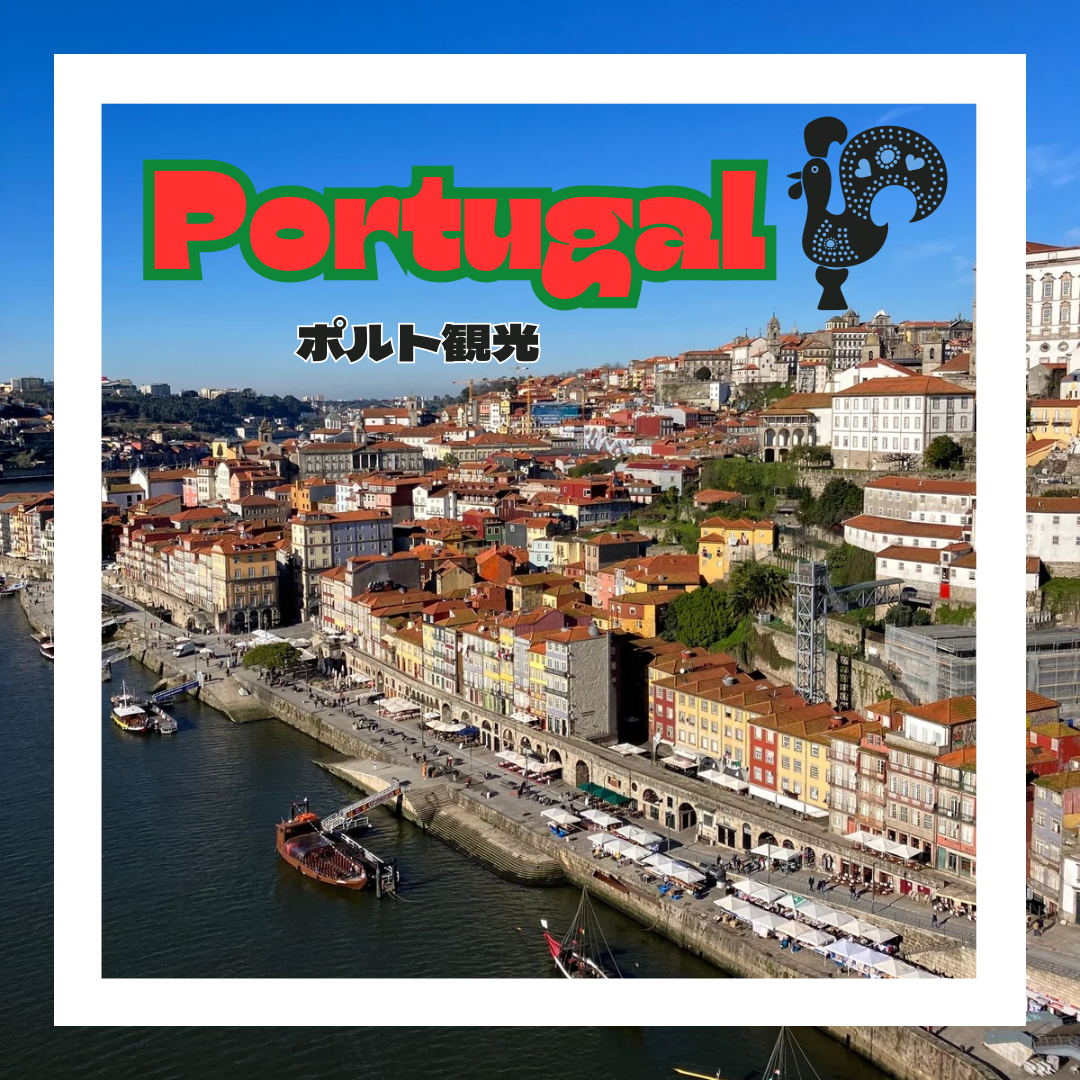2022年05月の記事
全16件 (16件中 1-16件目)
1
-

道路のない村へ in ラオス(写真で綴るラオスその82)
ボートの写真は、2008年5月13日に、ルアンパバン県パークウー郡ポンサワン村で撮った写真です。目的地に行く道路はなく、川をボートで遡り、山道を歩いて目的地に行きました。 背負い籠をしょっている二人の女性の写真は、2008年5月15日にルアンパバン県ポンサイ郡で撮ったものです。ボートでも行けない村へ、何度も渡渉を繰り返しながら向かっている途中ですれ違った地元の女性たちです。この場所は、小川が道の代わりになっていて、小川の中を歩きました。(続く)【Bon appétit !】 The descriptive analysis of beer prices indicates that transport costs in Lao PDR are not only determined by distance. Road access and the presence of markets are important determinants of prices at the village level. The high average prices and large price variations between villages without access to a road are likely to reflect a high variation in transportation costs and competition. The prices are high not only because it is expensive to transport Beer Lao to villages lacking road access, but also because there is not likely to be much competition between traders.(https://cdn.sida.se/publications/files/sida37198en-regional-development-in-the-lao-pdr.pdf)
2022.05.31
コメント(2)
-

ラオス国内の青いバナナ(写真で綴るラオスその81)
市場で見かけた青っぽいバナナ↑(2008年4月13日、パクセ、チャンパサック県)売られている青いバナナ↑(2008年4月13日、パクセ、チャンパサック県)道端に生っているバナナ↑(2008年4月29日、ハドサイフォン郡、ヴィエンチャン都)ラオスの果物はとても美味しいです。その中でもマンゴーは世界一美味しいと思います。どの家の庭にもマンゴーの木がありますので、時期になるとマンゴー食べ放題となります。 同様に、バナナもあちこちで実が生っています。食べ過ぎで、見るのも嫌だと思っているラオス人は意外と多いです。最高に美味しいです。 日本のバナナは青い時に輸入しますが、ラオスは生産国ですので、完熟してから収穫するものだと思っていました。あるとき、市場で青いバナナが売られていましたので、ラオスでも青い時に収穫することがあるのだと知って驚きました。2枚の写真はその時のものです。もう1枚は、道端で見かけたバナナの木(草)に生っているバナナです。(続く)【Bon appétit !】 Chinese banana farms in Laos are a case in point. Chinese investors initially rushed into neighboring Laos to build banana plantations in the impoverished northern provinces, which satiated growing demand for bananas in China while providing Lao people with jobs. But multiple reports have since surfaced about how practices on the plantations – particularly the excessive use of pesticides and chemicals – have damaged the environment and endangered the lives of workers.(https://thediplomat.com/2017/04/whats-behind-the-china-banana-ban-in-laos/)
2022.05.30
コメント(0)
-
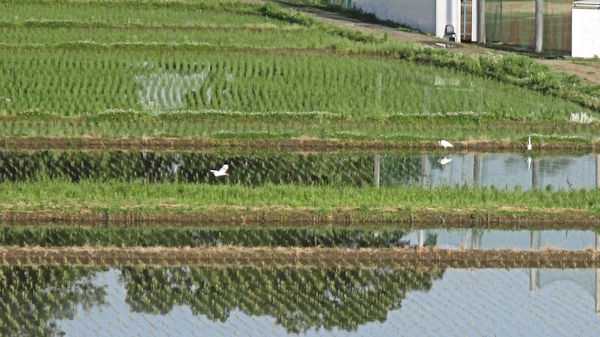
今日(2022年5月29日)の白鷺 荒川
白鷺はよく見かけるのですが、最近写真を撮っていませんでした。今日、久しぶりに白鷺の写真を撮りました。 写真の場所は、荒川左岸、さいたま市と志木市を結ぶ羽根倉橋から1.5kmほど上流へ上ったところです。 The photos show you white herons today on the Arakawa river in Saitama City.【Bon appétit !】 Sagiyama Memorial Park is a park and green area located in Midori Ward, Saitama City, Saitama Prefecture. It is adjacent to Minuma Nature Park across the eastern rim for Minuma. There was Noda no Sagi Mountain, which was once designated as a special natural monument.(https://trek.zone/en/japan/places/565586/sagiyama-memorial-park-saitama)
2022.05.29
コメント(0)
-

ベトナム料理店とラオス総菜屋での食事 in ラオス(写真で綴るラオスその80)
写真は、2008年5月に撮った料理の写真です。 1枚は、カムアン県タケクにあるベトナム料理店で食べた時の写真です。この店は、何度も利用していますが、いつも、たくさんのトラックの運転手や旅行者で賑わっています。ほかの3枚は、サバナケート県ケンコードン村にある総菜屋さんの実家のテーブルを借りて食べた時の写真です。 ケンコードン村では、初め、水牛の脳みそを出してくれる店に行ったのですが、時間が遅く店が閉まっていましたので、その近くにあった総菜屋さんで惣菜を購入しました。タニシ料理をどうやって食べるのかと見ていたら、皆さん、口で吸いこんで器用に中身を食べていましたので、真似して食べました。(続く)【Bon appétit !】 Lao food typically has cuisines that have herbs and vegetables minced in. Similar to Vietnamese food, most often, the herbs and vegetables aren't simmered for long periods (like Thai food). Lao cuisine also uses Padaek, which is fermented fish sauce, as an ingredient for a lot of it's foods. Lao food also uses more glutinous rice, as compared to Vietnamese food which uses jasmine rice.(https://cookingwithlane.com/difference-between-vietnamese-and-laotian-food/)
2022.05.28
コメント(0)
-
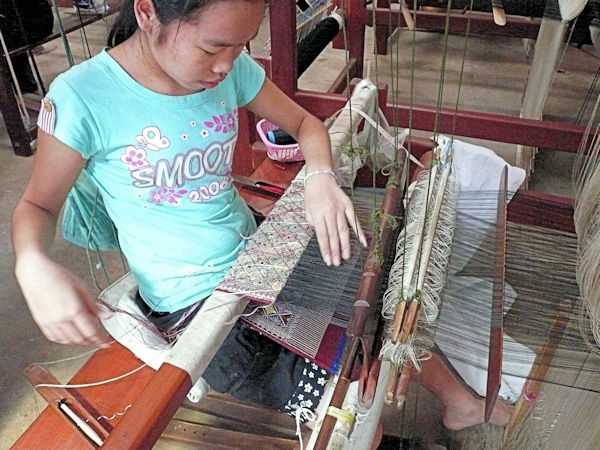
織物の腕を磨く(写真で綴るラオスその79)
ラオスは高床式の家が多く、床下で、織物を織っている姿をよく見かけます。 地方で見かける子供たちの服装の立派さに驚くことがあります。自家製の織物を使ったシン(巻きスカート)やズボンなどで、綿の素材が多いですが、そこにシルクの素材を使った飾りをつけてあるものも見かけます。 伝統的な模様は地域によって様々です。色合いは素晴らしく、派手さが無く日本人と同じ感性を感じます。 ビエンチャンなどで見かけるシルクの店では、そのまま、日本の着物や帯に通用するような素晴らしい織物を見ることができます。さらに、これらの店は自前の織機や染色工場を持っていることが多いので、彼らの技術を見ることも楽しみの一つです。(続く)【Bon appétit !】 Historically, textiles are very important to the Laotian people. These cloths were designed to convey cultural identities, weaving techniques and spiritual beliefs. Intricate designs depict way of life, ethnic affiliation and religious beliefs. The Lao women’s ankle-long tubular skirt (sinh) is the most vivid example. This popular women’s custom conveys their marital status and age, and the weaving styles, colors and patterns vary according to ethnic group.(https://www.moowon.com/stories/textiles-of-laos)
2022.05.27
コメント(0)
-

ラオス最初の鉄道、蒸気機関車(写真で綴るラオスその78)
メコン川は、ラオスからカンボジア国境に向かって川幅が一挙に十数kmに広がり、たくさんの滝を伴って一気に流れ下ります。4,000を超える数の島があり、島の間を急流が流れています。相当の高低差があるために、船による物資の運搬ができません。 この間を鉄道でむすんで物資の運搬を行うことを考えたのが、第2次大戦前のフランス植民地政府です。総延長6.5kmのラオス初めての鉄道が敷かれました。 この時使われた蒸気機関車が、メコン川に浮かぶコーン島に草木に埋もれて野ざらしになっていました。 写真は2008年4月14日に撮ったものです。60年以上の風雪にさらされてかわいそうな状態ではありましたが、なんとか形はとどめています。橋は、コーン島とデット島を結んでいて、その当時の鉄道橋だということです。(続く)【Bon appétit !】 The French colonial administration of Indochina was determined to use the Mekong River for a route into China, and to help counter British colonial expansion in Upper Burma. The governor of Indochina saw the Mekong as "the main point of connection between the different countries of French Indo-China (Cochin-China(ベトナム南部), Cambodia, Laos and Tonkin(ベトナム北部)), which will be able to communicate with each other through it". The main obstacle was in southern Laos, where the river divides into several channels with rapids (known as the Khone Phapheng Falls) at the Siphandon Islands.(https://en.wikipedia.org/wiki/Don_Det%E2%80%93Don_Khon_railway)
2022.05.22
コメント(4)
-
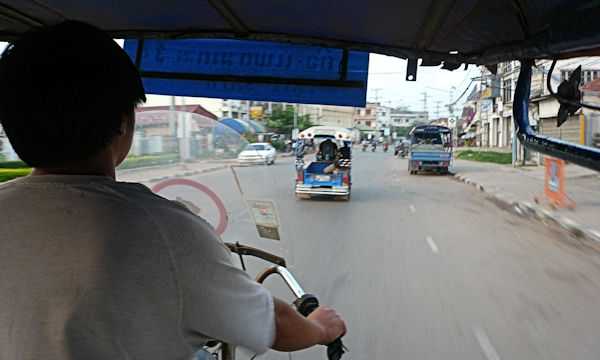
ラオスの乗り物:トゥクトゥク、乗り合いトラック、サイドカー(写真で綴るラオスその77)
ラオスでの近距離移動は、トゥクトゥクに乗ります。オートバイの前輪部分とリヤカーを合体したような三輪の乗り物です。タクシー代わりに使います。 トラックの荷台に乗り込む乗り合いトラックは、近隣の村まで行く時に使います。 ラオス南部にあるチャンパサック県ではオートバイにサイドカーを付けた乗り物もみかけました。(続く)【Bon appétit !】 Figuring out transportation on your own in Laos can be very challenging. While there are a variety of transportation options, travel is slow, and roads can be flooded or unpaved altogether. Besides the ubiquitous tuk tuk, there are plenty of forms of transport in the Lao PDR. With a little patience and a lot of good humor, you’ll get to where you’re going eventually.(https://theculturetrip.com/asia/laos/articles/how-to-navigate-transport-in-laos/)
2022.05.17
コメント(2)
-

市場が楽しいラオス(写真で綴るラオスその76)
写真は、2008年3月28日にラオスの古都ルアンパバンの市場で撮った写真です鶏、キノコ、ソーセージ、魚、お菓子等なんでもあります。 山の幸が豊富に売られています。小動物、爬虫類、昆虫、きのこ、木の実、果物など珍しものがたくさんあります。ソーセージ、海苔などの加工品も手作りで、驚くほど美味しいです。(続く)【Bon appétit !】 Luang Prabang might be a World Heritage City, but I would vote for it as a UNESCO Food Heritage City as well. There are just so many interesting foods to try, and you’ll find so many at the morning market. Wonderful breakfast snacks, relaxed and friendly vendors, and miniature mountains of jungle vegetables overflow fresh produce tables. Far from the hectic market pace you might see in a bigger market like those in Vientiane, the Luang Prabang morning market is relaxed and moves at a slow pace – just like most things in the city. Be on the lookout for the more rare items here like locally grown spices, forest-collected mushrooms, and other medicinal home remedies.(https://migrationology.com/luang-prabang-morning-market/)
2022.05.15
コメント(2)
-
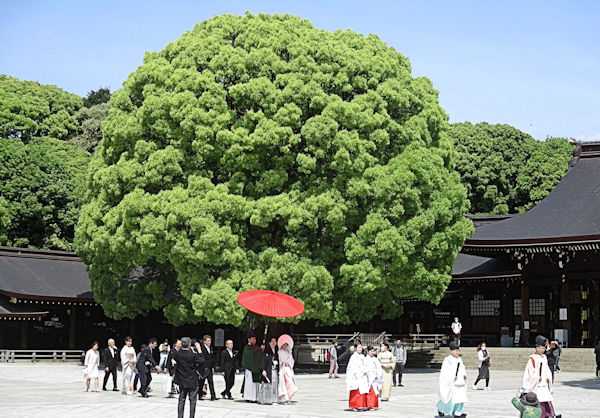
夫婦楠(めおとくす)(Coupled Kusunoki) at 明治神宮
夫婦楠(めおとくす)↑(2022年5月8日、明治神宮) 明治神宮拝殿に向かって左側に楠が立っています。新緑の緑に包まれていて、大きく枝が広がっています。 この楠は、実は2本の楠の広がった枝葉がくっつき、大きな一本の木のように見えています。二人が仲良く並んで立つ姿を象徴していて、縁結び、夫婦円満、家内安全のパワースポットになっているということです。 何組のの新郎新婦が神主さんと巫女さんに先導されてお参りしています。 Kusunoki, camphor tree, stands up in front of the worship hall of the Meiji Shrine. Now it is a time for Kusunoki to be covered by fresh green leaves. The Kusunoki looks like a tree but it actually consists of two trees called “Coupled Kusunoki .” They are symbols of matchmaking, matrimonial happiness, and family safety. You can see newly married couples are walking around the area guided by a Shinto priest for getting power from the “Coupled Kusunoki.”【Bon appétit !】 The vast (approximately 700,000 square meters) precincts feature the famous Kiyomasa Well power spot, the beautiful Japanese irises of the Imperial Garden (best viewed in June), the two camphor trees named the ‘Kusunoki Couple’ and said to bring luck to people seeking matchmaking or matrimonial happiness, and many other places of interest. Come feel the holiness and serenity of the place, surrounded by the lush(青々と生い茂った)woods that will make you forget that you’re in Tokyo.(https://www.locationbox.metro.tokyo.lg.jp/english/locatabi_eng/list/detail.html?pdid=598)
2022.05.12
コメント(4)
-

ラオスの稲の乾燥(稲株の上に置く、はざ掛けする)(写真で綴るラオスその75)
稲の刈り取り↑(2007年11月7日、サワナケート県)稲の刈り取り↑(2007年11月7日、サワナケート県)稲株上での乾燥↑(2008年5月7日、ソーンコーン郡、サワナケート県)稲株上での乾燥↑(2008年5月8日、サイブリー郡、サワナケート県)はざ掛けでの乾燥↑(2008年5月8日、サイブリー郡、サワナケート県、ラオス) ラオスの米作りは、水さえあればいつでも田植えは可能です。とはいっても、灌漑施設があまり発達していませんので、多くの田んぼでは雨季中心で、7月頃に田植えをして11月頃に収穫しています。また、1月頃に田植えをして5月頃収穫する場合もあります。 写真は、稲刈りの様子です。刈り取りした稲穂は、稲株の上に載せて乾燥させます。はざ掛けをして乾燥する光景ははほとんど見ませんが、地域によってははざ掛けも有ります。(続く)【Bon appétit !】 Almost 90% of rice production occurs during the wet season, as only about 12% of the cultivated rice area is irrigated. There is no irrigated acreage in the highland area, limiting highland rice farmers’ growing season to one crop per year (April–November), while some lowland rice farmers have been able to cultivate rice twice a year with irrigated farms near the Mekong River. The lowland main rice crop is usually planted in June and July and harvested from October to December. The lowland off-season crop is usually planted in December and January and harvested in April and May.(https://en.wikipedia.org/wiki/Rice_production_in_Laos)
2022.05.09
コメント(2)
-
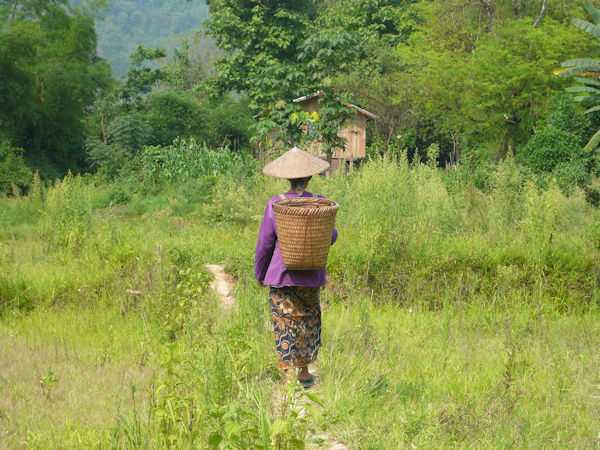
ラオスのリュックサックは籠(写真で綴るラオスその74)
籠を背負った女性↑(2008年5月15日、ポンサイ郡、ルアンパバン県)籠を背負って市場に来た女性たち↑(2008年5月16日、ルアンパバン、ラオス)ラオスでは、子供も大人も籠を背負って歩いている女性を良く見かけます。背負籠には、山で採った山菜やキノコを入れます。あるいは、市場で購入した食料を入れます。 背負籠の編み方は、地域によって様々です。網目が荒い籠や、籠の底面のかたちが 四角だったり、一直線だったりといろいろです。 夕方になると、多くの人が家路に向かって道を歩いています。背中の籠の中は、自然の恵みがいっぱいです。(続く)
2022.05.08
コメント(2)
-

自転車で牛追いする子供たち(写真で綴るラオスその73)
自転車に乗って牛追いする↑(2008年5月6日、サワナケート県、ラオス)家路に就く水牛を追う↑(2008年5月8日、サワナケート県、ラオス) 牛や水牛があちこちで草を食んでいたり、走ったり、寝転んだりしている風景はラオスの日常です。夕方になると、牛も水牛も家路に就きます。牛追いの人が牛を追っていきます。牛追いは、子供が行うことがよくあります。写真の子供たちは、自転車に乗っていますが、普通は、歩いて牛追いをします。(続く)【Bon appétit !】 The system of cattle production is mainly based on smallholders, especially in the rural areas. Most farmers raised their cattle as traditional free-range in fallow and forest, free-ranging in fenced-fallow, rotational grazing in fenced-pasture, and cut-and-carry (cattle are kept in pen and fed by cut grasses or other vegetation) raising system. Some of Laos' cattle farmers offered natural pastures, including elephant grass, Phakuay grass, Phaek grass, wild banana, sweet potato vine, dried and fresh cassava, and other forest vegetation.(Somsy Xayalath, Malam Abulbashar Mujitaba, Arth David Sol Valmoria Ortega, József Rátky、A review on the trend of livestock breeds in Laos)
2022.05.05
コメント(4)
-

ラオスで見たスチームサウナのボイラー(写真で綴るラオスその72)
写真は、2008年4月にチャンパサック県を訪問した時に、パクセーで見たスチームサウナです。 建物の外側にボイラーがありました。下から薪を燃やしてお湯を沸かします。ボイラーからは、4本のパイプが出ていて、4つのサウナ室にそれぞれのパイプが繋がっています。サウナ室に入ると蒸気の出口にハーブのようなものがありました。 このスチームサウナはクリニックに併設されていましたが、特に、治療用ということではありませんでした。(続く)【Bon appétit !】 If this is your first Lao sauna experience, it’s straightforward: pay 15,000 kip, put on the sarong, then sit in the room which fills with steam infused with a wonderful aromatic mixture of herbs. Alternate between the hot box and cooling off in the fresh air while sipping cups of herbal tea. The sauna is extremely popular with the locals in the evening so you may have to wait a few minutes for your turn.(https://www.travelfish.org/sight_profile/laos/northern_laos/bokeo/huay_xai/3062)
2022.05.04
コメント(2)
-
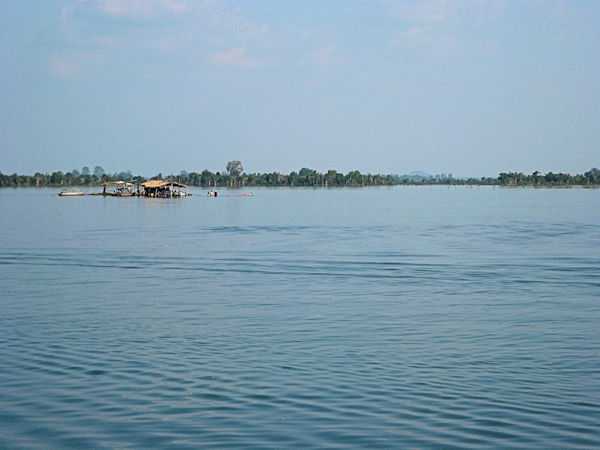
ラオスの川イルカ絶滅(写真で綴るラオスその71)
国際協力NGO「IV-JAPAN」発行のIV-NEWSVol.44を読んでいたら、なんと、「ラオスの川いるか絶滅」の記事が…。 記事によりますと、2016年12月にラオス側に3頭のイルカの生存が確認されたということですが、2021年4月にメスのイルカが亡くなり、6月にもう1頭のメスが亡くなり、2022年2月15日に最後のオスのイルカが亡くなったということで、ラオスのイルカは絶滅してしまったということです。 WWF(World Wide Fund for Nature)によりますと、ラオス側は絶滅し、カンボジア側に生息しているイルカは89頭しかいないそうです。 写真は、2008年4月14日に、メコン川の上流側から下流方向に向かって撮ったもので、うち2枚にはイルカが映っています。この水域は、ほぼカンボジア領内です。メコン川は、国境を越えて流れていますので、ボートでこのまま進んでいくと、カンボジアに入ってしまいます。ラオス領内で、じっと水面を見つめます。次から次へとイルカが背中を見せていました。時々背中を現わして潮を吹きます。つがいのイルカもいました。この辺りに生息するイルカはピンクドルフィンと呼ばれていて、体がピンクがかっていると言われていましたが、黒い影が見えるだけで色の確認はできませんでした。(続く)【Bon appétit !】 On the death of the last known river dolphin in the transboundary pool on the Cambodia-Laos border, found on February 15, 2022. This death most likely represents a national-level extinction for Laos. The population was publicly declared functionally extinct in 2016 when only three dolphins were left. There are an estimated 89 river dolphins left in the Cambodia part of the Mekong river according to surveys conducted in 2020. (https://www.wwf.org.la/?372355/WWF-Laos-is-saddened-by-the-death-of-the-last-known-river-dolphin-in-the-transboundary-pool-in-the-Mekong-between-Laos-and-Cambodia)
2022.05.03
コメント(2)
-
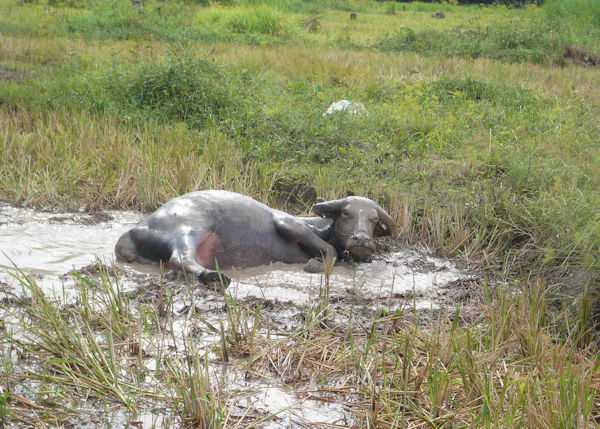
水牛が泥んこで遊ぶ(写真で綴るラオスその70)
2枚の写真は、2008年5月6日と8日にラオスのサワナケート県で撮りました。 水牛は泥んこが大好きです。泥んこの中で恍惚としている水牛をしばしば見かけます。(続く)【Bon appétit !】 In Laos, swamp buffalo are raised by small farm holders for a variety purposes inagriculture production. Livestock production plays a vital role in small farm systems in Laos. Livestock production generates more than 50 percent of household cash income. Large ruminants like cattle and buffalo play a particularly important role as a “live saving bank” since they act as capital accumulation and insurance functions for smallholders. The role of livestock, particularly large draft animals, becomes more important when the oil price increases as they provide a source of labour as well as manure for the crops.(https://nardt.org/vn/tID4201_ROLE-OF-BUFFALO-IN-SMALL-FARM-SYSTEMS-IN-LAO-PDR.html)
2022.05.02
コメント(2)
-

メコン川沿いの憩いと癒し(写真で綴るラオスその69)
メコン川で憩う(対岸はタイ)↑(2007年8月16日、ビエンチャン)夕陽を見ながらクアパッド(チャーハン)↑(2008年1月16日、ビエンチャン) 夕方になると多くの人が集まる、ラオスはビエンチャンのメコン川岸。タイ側に沈む夕陽を見ながら幸せな気持ちになります。 今では、護岸が整備されて写真の場所は道路になってしまい跡形も無くなってしまいましたが、2010年頃まではまだ、長閑な農村の風景が川沿いに広がっていました。(続く)【Bon appétit !】 Vientiane’s waterfront seems purpose-built for glorious sunsets. A new park and promenade are heavily used by local families out enjoying the balmy(爽やかな)evening air. Kids play and swim in the small, protected lagoons created by the wide sandy islands. And in the evening, vendors at a night market sell the usual wares to tourists. It’s all makes for a relaxed, friendly, and scenic place to spend the early evening.(https://havecamerawilltravel.com/places/vientiane-waterfront-laos/)
2022.05.01
コメント(2)
全16件 (16件中 1-16件目)
1



